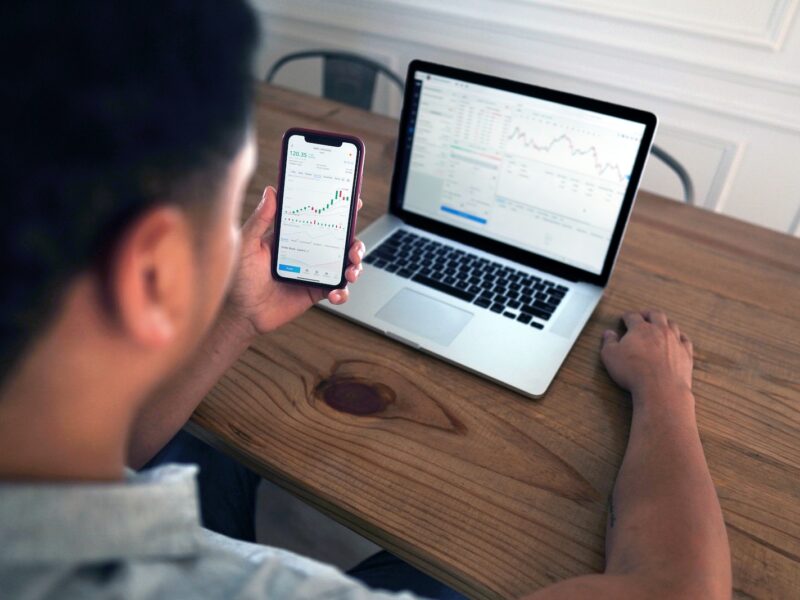Mobile banking is carrying out a financial transaction using a mobile device. This can range from a bank sending a fraud alert to a user’s phone to a client sending money to their family.
Banks or other financial institutions offer mobile banking to their customers to facilitate remote transactions. Unlike online banking, mobile banking usually uses an app provided by the institution.
It’s available 24/7 and depends on the device’s data connection. Let’s find out everything there’s to know about this banking service.
Mobile Banking History
The first version of mobile banking is known as SMS banking. It allowed banking transactions via text or SMS. However, the services were quite limited. For example, you could text the bank to request your balance or get alerted to a transaction involving your bank account. However, the arrival of Wireless Application Protocol brought new possibilities for both banks and clients. The first WAP banking service was introduced in Norway in 1999 and was soon widespread.
With the development of smartphones with Android and iOS operating systems, mobile banking started evolving. First, this allowed people to access online banking through browsers. Then, they started developing dedicated apps. Nowadays, most banks have sophisticated interfaces and enhanced transactional abilities. According to data, the revenue of mobile apps globally amounts to $318 billion.
The Basics of Mobile Banking
Banks now have mobile apps you can download onto your mobile device and use to gain financial access, track your spending, pay bills, send money to other accounts, and more. You can also access your periodic statements and other documents, as well as set up automatic notifications to help you manage your account. That being said, establishing a secure connection before logging into a mobile banking app is crucial to prevent personal information from being compromised.
4 Main Types of Mobile Banking Services
Account Information Access
With mobile banking, you’ll have all the information needed for better funds management right at your fingertips. You can view your balances and statement on demand, review transactional history, keep track of your deposits, review loan or card statements, and more.
Transactions
Mobile banking makes payments and money transferring hassle-free. You can make payments to third parties, transfer funds to yourself, or make bank-to-bank transfers. Finally, you make payments via NEFT/IMPS/RETG/UPI/MMID.
Investments
You can easily open fixed or recurring deposits, invest in mutual funds, as well as access and manage your portfolios through investment management services at your convenience.
Support Services
Support services cover all services that ensure for smooth banking experience. For example, banking apps allow you to check on the status of your credit or loan status, file a complaint, follow up on your credit or debit requests, and even locate the nearest ATM.
Key Benefits of Mobile Banking
Mobile banking is easy to use, accessible, and convenient. It practically allows you to carry on your bank account in your pocket and conduct transactions on the go. Here are the four key benefits of mobile banking.
24/7 Bank Account Access
Mobile banking lets you access your account anytime, from any location. Such unprecedented accessibility saves you time and effort. You can check your balance or deposit a check from the comfort of your bed. Additionally, you can review your banking statements and transaction history in real-time. What is more, you can get notified of account activity to act proactively on suspicious transactions.
Advanced Features
In addition to basic banking transactions, many banking apps are rich in features. For example, some apps might offer budgeting and tracking tools, personalized financial advice, or even access to virtual assistants. Additionally, these apps can provide other perks like locating nearby ATMs and cardless ATM withdrawals.
Greater Control
Another great benefit of mobile banking is managing and moving money as you see fit. As we said, you have 24/7 access to your banking account, and you can track your transactions in real-time, maintaining proactive control over where your data is going. Additionally, some bank apps even let you activate a new credit or debit card. Also, you might be able to set up controls for your cards and savings goals to help organize your money.
Enhanced Security
Mobile banking is generally considered more secure than digital banking. Many banks make adding an extra security layer to your banking app easy. For instance, you can add multi-factor authentication or use biometric authentication to log in. Additionally, banks can automatically scan for risks and ask for additional verification if a user logs in from an unknown device.
Final Thoughts
Mobile banking allows you to access banking services from anywhere, anytime. As a result, you can save your precious time by paying bills, depositing checks, or transferring money at your own convenience and discretion.



